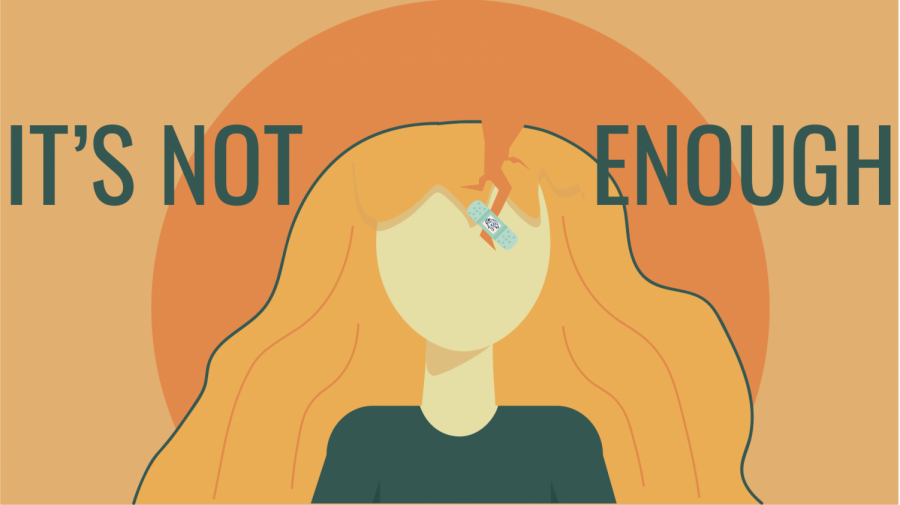Staff Editorial: Our school needs to assertively address mental health
Current measures addressing teen mental health are not enough to substantially improve students’ mental health inside and outside of school
December 11, 2021
Today’s students are grappling with a variety of issues beyond the classroom. Depression and anxiety. The state of the country. COVID-19. Climate change. Mass shootings.
Everything from five-day school weeks to three hours per night of homework to two hours a night of sports practice is enough to make even the busiest of adults shudder at how often teenagers are stretched thin to the point of collapse. New issues arising from the COVID-19 pandemic to this impossible balancing act drives teens to seek ways and outlets of validating their feelings.
As young adults who are often characterized by our vulnerability and impressionability by older individuals, we yearn for school to be a safe place to express our hardest struggles, deepest insecurities and most prevalent fears. While we may be too young to concern ourselves with taxes and bills, one in seven of us go to bed wishing we weren’t waking up for one reason or another.
In 2020, the advocacy group Mental Health America surveyed teenagers about the top three things that would be most helpful for their mental health. More than half the respondents cited the ability to take a mental break or absence from either school or work. All respondents reported that what they need most is support for their own mental health, connection to mental health advocacy and training to support their peers’ mental health.
These statistics should scare public schools to death yet they catch the slightest attention from school administrators who endeavor to simplify the complexity of teenage mental health by issuing band-aids in the form of social-emotional lessons, SEL, among other measures that only address mental health at face value. Aside from acting as a conduit for any kind of mental illness, SEL’s unpopularity among students stems from its lesson content and presentation residing within an elementary level to high school students. The unpopularity among staff comes from teaching material they did not create, making “uncomfortable conversations” with their students more difficult. This has caused some teachers to neglect the SEL curriculum altogether.
According to the New York Times high school students in several states are already combating the widespread issue of mental health negligence amongst schools by advocating for mental health days. By the time “Students Coalition For Mental Health” leader Ben Ballman reached his junior year in high school he was busier – and more anxious – than he had ever been.
“I had moments where it felt like the whole world was coming down on me,” Ballman said. “It’s not even that I was going above and beyond, it was ‘This is the bare minimum.’ It’s a pressure cooker that is locked down. There is nowhere to escape. Eventually you just kind of burst at some point.”
Starting with our school, mental health needs to be addressed head-on, starting with raising the universal awareness that mental health is an issue that cannot be simplified. There is no easy solution but there are alternate approaches that include but are not limited to: hiring additional social workers to join already overworked clinical school social worker Debbie Gudenkauf, publishing a list of mental health resources on the counseling website, establishing a support group for students struggling with mental health, and giving students an excused mental health day once or twice a semester
The earlier our school addresses the elephant in the room, the sooner “one in seven teens” becomes “not a single teen.”










